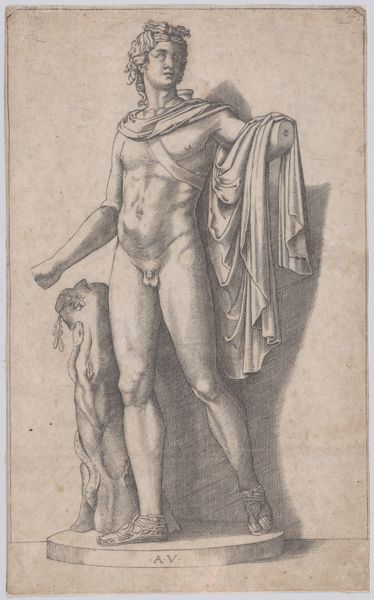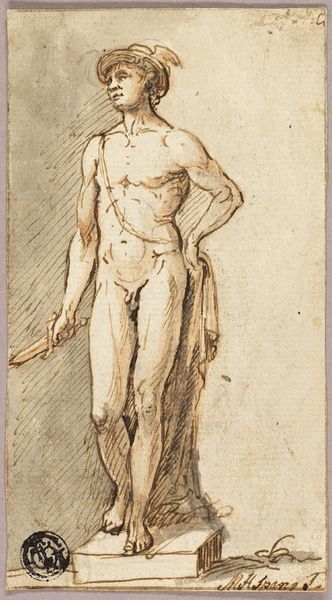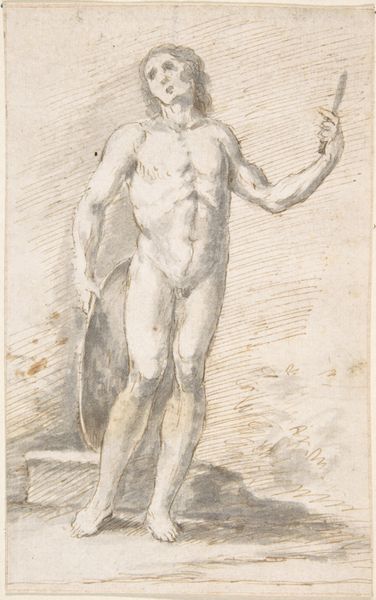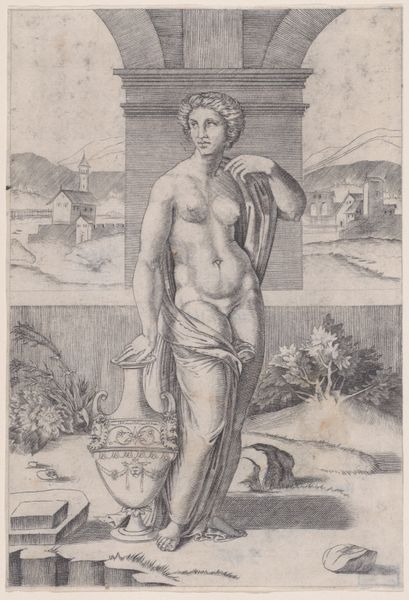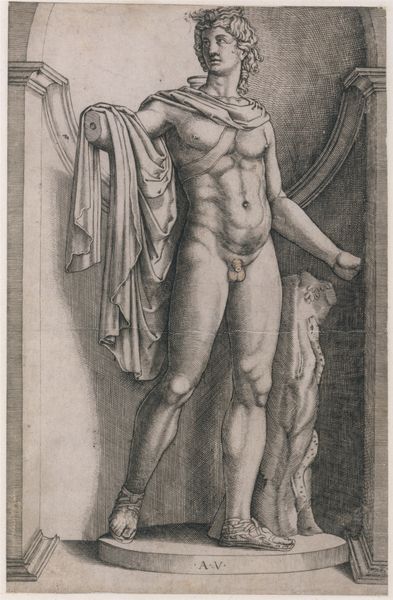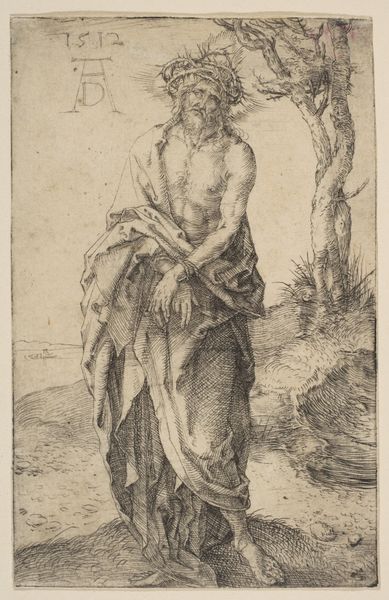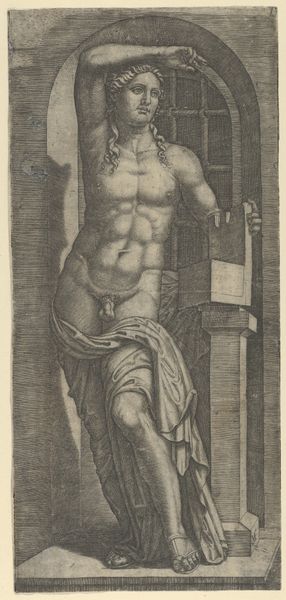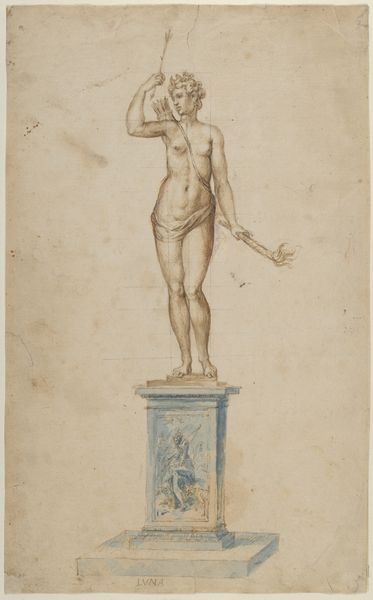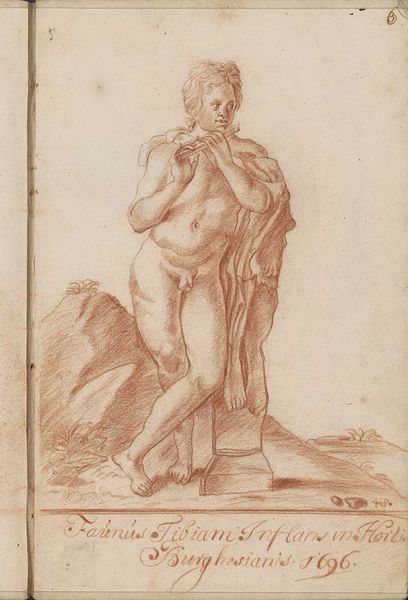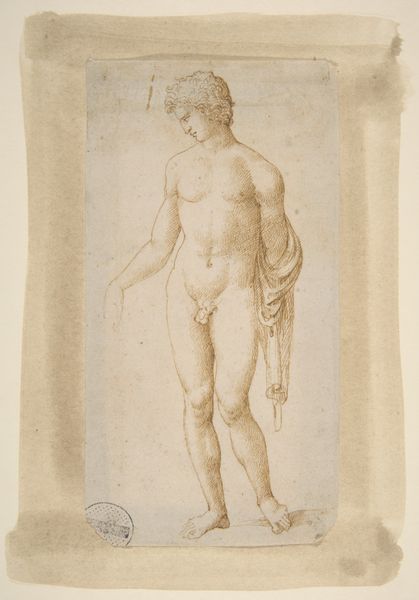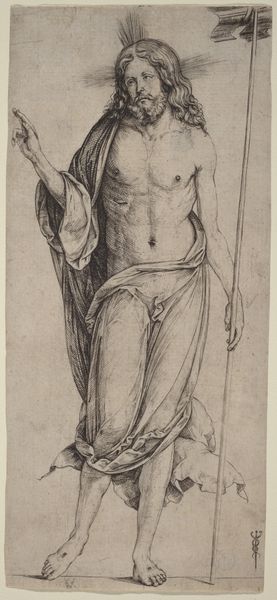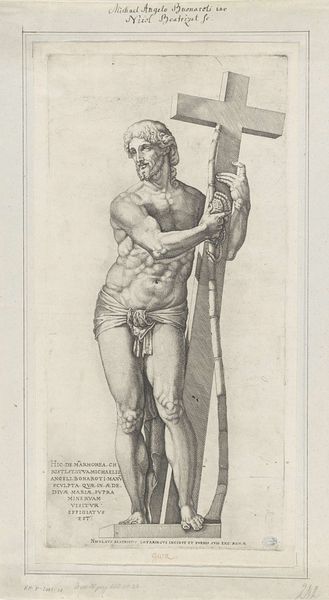
drawing, print, paper, engraving
#
portrait
#
drawing
# print
#
figuration
#
paper
#
pencil drawing
#
line
#
portrait drawing
#
history-painting
#
italian-renaissance
#
nude
#
engraving
Dimensions: 284 × 199 mm
Copyright: Public Domain
Curator: Giovanni Antonio da Brescia’s engraving, Venus, from around 1513, really captures a particular moment in the history of printmaking and its intersection with broader social currents. What are your initial thoughts? Editor: I'm struck by the delicate line work; the figure of Venus has a gentle grace. How did this type of printmaking influence artistic production at the time? Curator: That's an excellent observation. The printmaking process itself—the labor, the tools used, the very idea of reproducible imagery—allowed for wider distribution of images. It democratized access, impacting how artistic ideas circulated among workshops and patrons. What materials do you notice specifically? Editor: Well, it’s an engraving on paper. So the physical accessibility seems linked directly to those materials. Does that flatness limit the piece at all, since painting has such depth at this point? Curator: The ‘limitation’ you describe becomes its strength. Brescia wasn’t trying to replicate painting. Instead, he was embracing the specific possibilities afforded by the reproducible print, where each pull made the same and exactly unique thing at once. Think about how these images might have shaped perceptions of beauty, or even of female labor within artistic production at that time. Editor: That's interesting. So it's less about comparing it to painting and more about appreciating how this medium changes the game, right? Making art more available, shifting the control... Curator: Exactly. This seemingly simple print signifies profound shifts in artistic creation, access, and consumption, and what that availability allows. Editor: Okay, I see the connection between the art and its place in society more clearly now, especially considering the role of reproducible art.
Comments
No comments
Be the first to comment and join the conversation on the ultimate creative platform.
